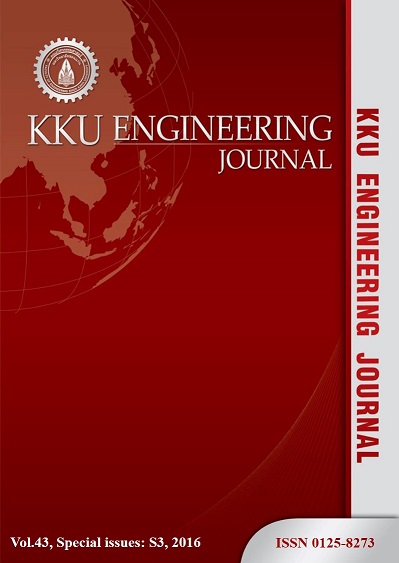Tsunami risk assessment of the 2004 Indian Ocean tsunami in Kamala beach Phuket
Main Article Content
Abstract
The December 26th, 2004 Indian Ocean tsunami caused damage to many buildings and killed many people in Indian Ocean countries. Regarding the 2011 Tohoku Japan tsunami, the devastating tsunami ravaged the eastern coast of Japan. It is important to mitigate the damage by tsunamis in the future. These events emphasize the need of tsunami risk assessment for evacuation planning, estimation of loss and estimating residential damage from tsunami hazard. The residential damage in Kamala Beach, Phuket is evaluated by the proposed tsunami fragility curves. The proposed tsunami fragility curves are considered only reinforced-concrete buildings and classified into two types: one-story buildings and buildings taller than one story. Building inventory is surveyed and classified into 5 zones. The tsunami inundation heights in each zone are averaged from the observed damage data. The results of evaluated buildings damage are compared with actual observed damage. Most one-story buildings are damaged in primary members and for buildings taller than one story are damaged in secondary members only. The damage probability for observed buildings of each area agrees well with the evaluated damage of buildings.
Article Details
This work is licensed under a Creative Commons Attribution-NonCommercial-NoDerivatives 4.0 International License.



